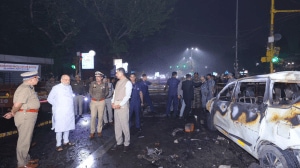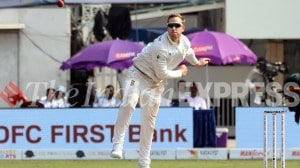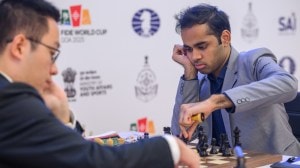Nurturing hate in Mumbai
Bombay, that grand cosmopolitan city by the sea, is regressing into Mumbai, a petty collection of squabbling sectarian ghettoes. The angry ...

Bombay, that grand cosmopolitan city by the sea, is regressing into Mumbai, a petty collection of squabbling sectarian ghettoes. The angry reaction of Dalits to the desecration of the Ambedkar bust at Ramabai Nagar in Mumbai on July 11 is not a spontaneous outburst. It is the end result of the simmering climate of sectarian hate and violence which has been calculatedly built up over the last 30 years by some of Mumbai’s leading political and commercial groups.
Among these, Bal Thackeray and his Shiv Sena deserve top honours for diverting Bombay’s vibrant energy into Mumbai’s dark alleyways of parochial mayhem. Over the past three decades, the Shiv Sena’s Supreme Leader has hurled crude obscenities at women, at distinguished Maharashtrian literary and social figures, at the so-called South Indian clerks and, repeatedly, at Muslims. There have been mild murmurs of disapproval by the social elite of Mumbai, which has generally regarded him as an endearing, warm-beer-drinking eccentric.
Thackeray and the Shiv Sena were initially encouraged by Mumbai textile mill-owners and later by the city’s building contractors. Cowardly, upper caste Communist trade union leaders retreated when faced with Shiv Sena threats and busied themselves organising seminars on class consciousness.
Maharashtra’s Congress satraps, starting with Y.B. Chavan and V.P. Naik, followed by Vasantdada Patil, S.B. Chavan, Sudhakarrao Naik and Sharad Pawar, have all at some point displayed a soft corner for the Shiv Sena. Despite repeated violent outrages by Shiv Sainiks, Congress governments in Delhi and Mumbai have avoided taking firm action against the Shiv Sena. Even in January 1993, when the Sena was the prime engineer of the holocaust in Mumbai, Maharashtra Chief Minister Sudhakarrao Naik, Defence Minister Sharad Pawar and Prime Minister Narasimha Rao strained every optical nerve to look the other way while hundreds of the city’s Muslims were murdered. The holocaust was a political disaster for the Congress and by March 1995 the Sena was in power, with the BJP hanging on to Thackerays blazing saffron kurta.
Many wishful thinkers had hoped that power would turn the Shiv Sena overnight into a disciplined and restrained organisation. While there have been no volcanic eruptions since 1995, the Sena has continued its low-intensity war against anyone who dares to cross its path, whether it is the late Ramesh Kini, the sacked (now judicially reinstated) G.R. Khairnar, social reformer Anna Hazare, dissident editor Nikhil Wagle, Congress leader of the opposition Chhagan Bhujbal or the Dalits.
The conflict between the Shiv Sena and the Dalits began way back in 1988 with the controversy over Ambedkar’s book, Riddles of Hinduism. It widened in January 1994 when the Sharad Pawar Government announced that Marathwada University would be renamed in honour of Ambedkar. Shiv Sena cadres were infuriated and in the subsequent violence 11 Dalits were killed and 41 of their settlements torched in Marathwada. On January 27, the murder of a Dalit youth by a Shiv Sena corporator in Aurangabad sparked off large-scale rioting. On March 16, another Dalit youth was killed when violence erupted at Shrirampur in Ahmednagar district, following the desecration of an Ambedkar statue. The July 11 incident in Mumbai was a sequel to these earlier episodes.
The Shiv Sena’s acts of vandalism and violence are invariably ignored by the Mumbai police, as was evident on July 13 when the homes of Congress leaders were ransacked. During the January 1993 violence, some sections of the Mumbai police had even proudly declared that they were Shiv Sainiks in uniform and till now, not a single Sainik has been prosecuted by the police for involvement in that month’s terrible incidents.
The Shiv Sena, together with its partisan administration and police, is relentlessly fragmenting Maharashtra’s and Mumbai’s once cohesive society. As each section of society defensively confronts the other, Maharashtra is moving towards becoming a Bihar — with a difference. In Bihar, the upper segments of its economy and society are bitterly opposed to Laloo Yadav and his followers. In Maharashtra, the upper segments continue to humour and cajole Bal Thackeray and his cohorts.
The writer was formerly with the Mumbai- based Economic and Political Weekly’





- 01
- 02
- 03
- 04
- 05


























